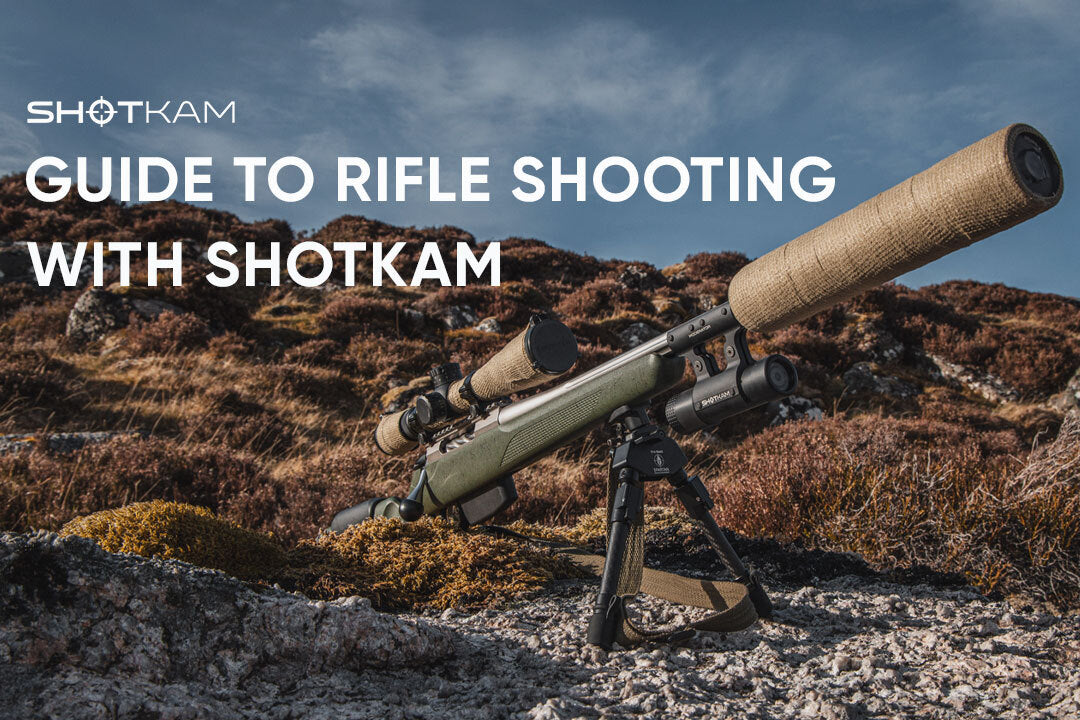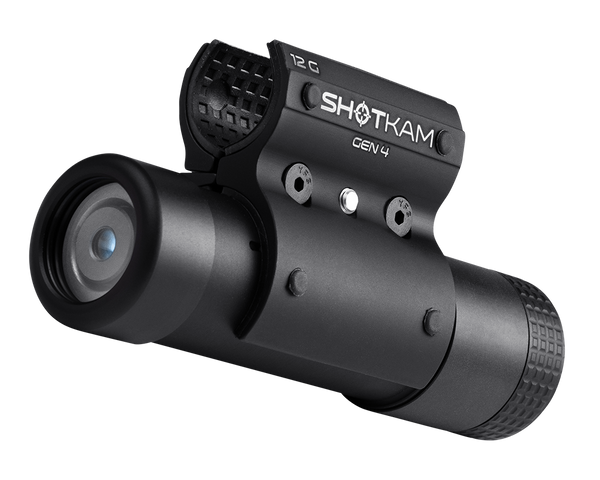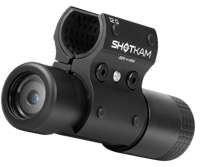Problemet med at fortolke forspring
Forståelse af forspring ved skydning
Churchill kaldte det "forspring", resten af verden kalder det "lead". Kald det, hvad du vil – hvert skud mod et mål i bevægelse kræver, at skytten placerer en vis afstand (forspringet) mellem sigtekornet og målet. Indtil nogen opfinder en haglpatron, der flyver med lysets hastighed, må vi acceptere, at det tager tid for haglene at nå frem fra løbet til målet. Den tid afhænger af afstanden, men det tager typisk cirka 0,12 sekunder for haglene at rejse 40 yards. I samme tidsrum vil et lerduemål, der bevæger sig med 80 km/t på tværs af skytten, have bevæget sig næsten en meter. Det er logisk, at skytten må sigte en meter foran målet for at ramme det.
Der er mange måder at skabe forspring på. En af de mest anvendte er vedligeholdt forspring, hvor skytten indhenter målet, passerer det på dets bane, skaber den korrekte afstand foran målet og skyder uden at stoppe bevægelsen. En anden metode er mere instinktiv, hvor skytten indhenter målet med mundingen, accelererer svinget gennem målet og trykker på aftrækkeren på det rigtige tidspunkt. Uanset metode er det væsentlige at sende skuddet i en retning, hvor haglskyens bane møder målet i rummet.
Haglgeværer har ikke sigtemidler i traditionel forstand – typisk er der blot et korn for enden af løbet, måske en skinne langs løbet og eventuelt et ekstra korn halvvejs. Men der er aldrig et bagsigte. Det skyldes, at bagsigtet er dit øje. I denne forklaring antager vi, at det dominerende øje er det, der kigger direkte ned ad løbene – det, du bruger til at (ikke) sigte med på lerduen.
Under skydning bør vi ikke fokusere på våbnet, men kun på målet og sigtekornet. Øjet og sigtekornet skal være korrekt justeret, hver gang våbnet skulderes, så de flugter med løbet. Dette kræver, at geværet passer til skytten. Hvis du har råd, er det en god investering – men de fleste tilpasser sig blot det gevær, de har. Mange topgeværer passer fint til 90 % af skytter, så tilvænningen er sjældent et problem.
At fortolke forspring er en anden udfordring. Det er svært for én skytte at forklare en anden, hvad han ser i det øjeblik, han trykker på aftrækkeren. Han kunne sige: "Sigt 60 cm foran og lidt under", men den udtalelse mangler mange detaljer. Mere nyttig information kunne være: "Jeg så meget af skinnen" eller "Jeg brugte vedligeholdt forspring", men det hører man sjældent.
ShotKam-innovationen
De fleste har set videoer på YouTube, hvor en ekspert har monteret et GoPro-kamera på sin haglgevær for at vise, hvad skytten ser under sigtning og skydning. Kameraet sidder dog for højt eller uden for linjen med skinnen, fordi enhver anden placering ville blokere skyttens øje. Resultatet ser akavet ud, og opløsningen er dårlig.
Her kommer ShotKam ind i billedet. ShotKam blev udviklet af den skotske ingeniør David Stewart, ekspert i våbensigte-systemer. Idéen opstod under en skydetræning, hvor hans søn havde svært ved at ramme lerduer. Han mente, at videooptagelser ville hjælpe, da unge ofte lærer effektivt via visuelle medier som computerspil.
Den næste udfordring var at bygge et kamera, der kunne modstå rekylkraften fra en haglgevær. Med sin militære baggrund udviklede David et solid-state videokamera med et sigtesystem, der monteres under løbene og kan klare op til 1.000G rekyl. En fungerende prototype var klar i slutningen af 2011, og efter seks måneders test i Floridas sumpe gik ShotKam i produktion i maj 2012. Løbende forbedringer har ført til et topmoderne kamerasystem, der trofast optager dine skydninger.
Efter aktivering optager ShotKam HD-video kontinuerligt i en buffer, men bruger et følsomt accelerometer til at registrere, når våbnet lukkes og affyres. Kameraet gemmer derefter en AVI-video på et 32GB hukommelseskort, som indeholder to sekunder før skuddet, selve skuddet og et sekund efter. Indstillingerne kan justeres med den medfølgende software – f.eks. til fuglejagt.
ShotKam leveres med flere nyttige funktioner (og en, der er helt unyttig – laseren). Videobilledet har en overlejret sigtemarkør – det kan være et kryds, en prik eller en "skinne". Det skal justeres præcist, så det matcher geværets reelle sigtepunkt. Justeringen er enkel og er systemets kernefunktion: Den viser præcis, hvor kornet pegede på skudtidspunktet.
Systemet fungerer nærmest automatisk. Du tænder det ved rundens start og glemmer, det er der. Kameraet går i dvale, mens du venter, "vågner", når du lukker geværet, og gemmer videoen, når du affyrer – også ved dobbeltskud – og går så tilbage i dvale. Du fokuserer blot på dine skud.
Det interne batteri oplades via USB-kabel og holder til en dags skydning. Batteriet er ikke tilgængeligt og kan kun udskiftes af producenten. Levetiden estimeres til 3 år. Pakken indeholder både USB-oplader og 12V oplader til bil. Kortet kan gemme op til 1.000 videooptagelser.
ShotKam er meget let og vejer kun 150 g. Det er bedst at montere kameraet så tæt på skæftet som muligt for ikke at forstyrre svingrytmen. De fleste skytter lægger ikke mærke til det efter kort tid.
ShotKam har Wi-Fi-tilstand, som gør det muligt at streame live til en Android- eller Apple-enhed med ShotKam-appen. Batteriet holder kortere tid i denne tilstand, men en instruktør ved din side kan se det samme som dig og hurtigt identificere fejl ved særlige skud.
Den mindst nyttige funktion er lasermodulet. ShotKam har en indbygget rød laser, der kan projicere en prik på væggen – udelukkende til træning. Problemet er, at den ikke kan justeres til at flugte med skinnen. På mit eksemplar sidder laseren cirka 8 cm til venstre og 5 cm under sigtelinjen, hvilket er forstyrrende. Det kan også føre til dårlige vaner som at ændre hovedstilling for at få prikken til at flugte med kornet. Jeg prøvede det én gang og slukkede den straks.
ShotKam leveres i en praktisk plastboks med skumindlæg, som indeholder selve kameraet, objektivdæksel, rensepen, hukommelseskort, SD-adapter, USB-kabel, opladere, monteringsbeslag med gummipude og en pose reservedele (ekstra dæksel, skruer, gummidele og unbrakonøgler).
Montering af ShotKam er nem og tydeligt forklaret i vejledningen og i videotutorials på deres hjemmeside. Du kan eksperimentere med placeringen af kameraet på den nederste løb for at minimere påvirkningen af dit sving.
Justering af ShotKam til skinnen er også let, men kræver en smartphone (Android eller iOS). Hent ShotKamPro-appen, tænd for kameraets Wi-Fi og forbind det til din telefon. Et forsinket videobillede vises på skærmen – brug dit normale sigtebillede til at justere markøren til et punkt på væggen (en orange klistermærke medfølger). Brug piletasterne på skærmen og foretag justeringen. Vær tålmodig – forsinkelsen kan give overreaktion. Når du er tilfreds, er ShotKam justeret og centreret på dit sigtebillede.
- Peter Millan, Sydafrika – ShotKam kundeanmeldelse
For flere gode ShotKam-tips, besøg Gil Ash's OSP Shooting School på https://ospschool.com/
Du læser:











